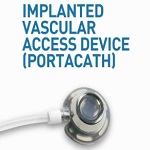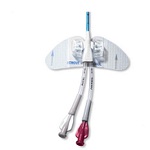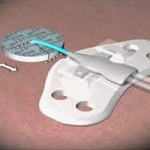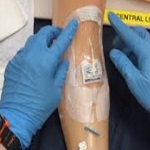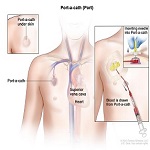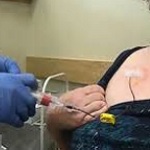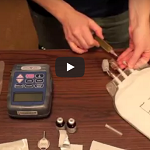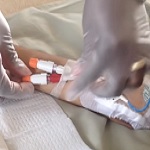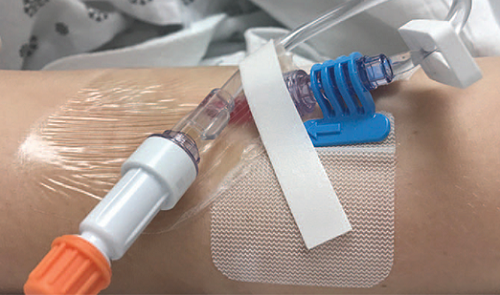
Instructions for Catheters and Supplies
Intravenous or IV therapy is beneficial for several conditions and medical situations including dehydration, nutrition, shock, surgery, blood transfusions, chemotherapy and medication administration. There are many types and brands of IV access catheters, and NursingCenter.com explains they fall under two designations, peripheral and central.
Peripheral: The most common type of intravenous catheter is designed for peripheral access. This is the IV line commonly put into the hand or forearm when a patient is admitted to the hospital. It is short, approximately 3/4- to 1-inch long, and is inserted into a vein by a nurse. Peripheral IVs come in various sizes, ranging from size 24 gauge or the smallest to size 14 gauge, the largest.
Midline Peripheral Catheter: Another type of IV catheter is called a midline, which is defined by NursingCenter.com as a catheter that is from 3- to 10-inches long, and inserted by a trained nurse in the arm near the inside of the elbow. This is threaded up inside the vein, with the tip not extending past the arm pit, or axilla.
Peripherally Inserted Central Catheter: A peripherally inserted central catheter, or PICC, is a flexible catheter that is put into the elbow vein much like the midline catheter. The difference is that this catheter is longer and guided into the vena cava, which leads into the heart,
Central Venous Catheter: A central venous catheters as those that are inserted by a physician through a vein in the neck, upper chest or anterior chest, with the tip in the vena cava of the heart. NursingCenter.com states that there are actually four types of central catheters: one is the PICC, while the others include a non-tunneled external catheter, a tunneled external catheter or an implanted port. The latter two catheters are surgically placed.
Select Instructions From the List Below
Access Port-a-cath Instructions
Port-a-cath A port-a-cath, also referred to as a port, is Read more...
Bard Medical STATLOCK® PICC Plus Stabilization Device
StatLock® PICC Plus Stabilization Device The StatLock® PICC Plus Stabilization Device offers Read more...
Biopatch – PICC line Dressing Change
PICC line dressing change (Biopatch) Shows how to set up Read more...
Caring for Peripherally Inserted Central Catheter (PICC)
Peripherally inserted central catheter (PICC) PICC stands for Peripherally Inserted Central Catheter. Read more...
Central Line Dressing Change Instructions
Central Line Dressing Change A central line (PICC, port, Hickman or other Read more...
Central-line-or-picc-line-dressing-change
Central Line Dressing Change A central line (PICC, port, Hickman or other Read more...
Dressing Change & Flush Port-a-Cath Instructions
Dressing Change & Flush Port-a-Cath A port-a-cath is a device that is usually Read more...
Flushing a port a cath Instructions
Flushing a Port a Cath Normal saline is used to flush fluids Read more...
How to prepare and administer TPN Instructions
TPN Administered TPN administration into a vein, generally through a Read more...
PICC line Blood Draw Instructions
Central Line Blood Draw Central lines are IV's which allow medications to be Read more...
Instructions for Catheters and Supplies
Access Port-a-cath Instructions
Port-a-cath A port-a-cath, also referred to as Read more...
Bard Medical STATLOCK® PICC Plus Stabilization Device
StatLock® PICC Plus Stabilization Device The StatLock® PICC Plus Read more...
Biopatch – PICC line Dressing Change
PICC line dressing change (Biopatch) Shows how Read more...
Caring for Peripherally Inserted Central Catheter (PICC)
Peripherally inserted central catheter (PICC) PICC stands for Peripherally Read more...
Central Line Dressing Change Instructions
Central Line Dressing Change A central line (PICC, port, Read more...
Central-line-or-picc-line-dressing-change
Central Line Dressing Change A central line (PICC, port, Read more...
Dressing Change & Flush Port-a-Cath Instructions
Dressing Change & Flush Port-a-Cath A port-a-cath is a device Read more...
Flushing a port a cath Instructions
Flushing a Port a Cath Normal saline Read more...
How to prepare and administer TPN Instructions
TPN Administered TPN administration into a vein, Read more...
PICC line Blood Draw Instructions
Central Line Blood Draw Central lines are IV's which allow Read more...


